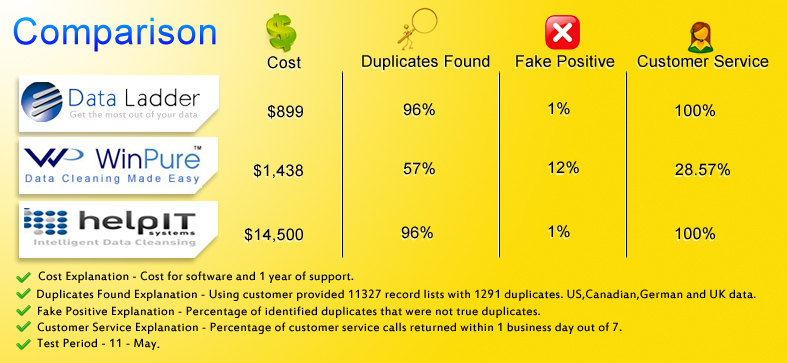 Before we start by discussing those things let us first start by knowing what actually is a dedupe and some related terms
Before we start by discussing those things let us first start by knowing what actually is a dedupe and some related terms
What is Dedupe and Dedupe Software
According to the dictionary definition; Dedupe is a way of handling duplicate files by removing them from lists or databases. In computing, this process refers to a data compression methodology of removing duplicate copies of recurring data
- It Can Work On Any Database
Dedupe software can work on any database, mailing list; Excel spreadsheets and many other types of software. This software can locate duplicate files from any mailing lists or multiple databases hence save time and ensure data accuracy.
- The Latest Addition
The latest addition in this category is “Audio Dedupe”. That is an innovative tool that actually listens to audio files and can recognize the similar files even if they are stored in different locations and different formats.
Ways to Dedupe
Deduplication can be done through a variety of ways by checking the “data down to bit level” and seeing if redundant data has been stored earlier.
- Hash-Based Algorithms
These methods allocate a hash algorithm such as MD5 or SHA-1 to every single piece of data. Thus a particular number for every piece of data is created. This number can be used to make a comparison with other lists of already present hash numbers. If that hash number is found in the existing catalog the data will not be stored again. But if no such number is found the new hash number is included in the database and data is stored.
- Bit-Level Comparison
This is considered the best option to compare two portions of data on the two blocks.
- Custom Method
Some organizations can opt for customized deduplication process. They can combine their own hash number algorithm with other methods. For example, one way of doing this can be first to mark redundant files and then dedupe through bit-level comparison.

Advantages of Dedupe
One of the primary advantages of data dedupe is that it shrinks the amount of data that needs to be stored. This means more storage space. This in turns quick data backup, lesser backup windows, and faster restores. Fewer amounts of data also mean that less bandwidth has been adopted and hence remote back up and catastrophe revival process can be expedited
What Deduplication Ratios Can Be Achieved
The answer to this question depends on the type of data what is being processed and over what period of time. The data that has a lot of recurring information such as email addresses or
Databases will get deduplication level from 30 to 50 times.
Differences between Hardware-Based Deduplication versus Software Dedupe
Hardware deduplication process gives relief from the processing burden that comes with data-deduplication software. It also incorporates deduplication in other forms of data protection hardware such as back-up appliances etc
Another difference between the two is that while software removes redundant data from the source hardware focuses on storage sub-system. This sets a parameter on the bandwidth saving that comes with taking away the data at the source. At the same time, software deduplication is also economical as compared to hardware installation.
How Data Dedupe Software Works
Dedupe software reviews data “down to block and bit level”. After the preliminary occurrence only altered data is saved and rest is discarded and replaced with an indicator to the earlier saved information. With this method, a compression ratio of 20 to 60 percent can be achieved, and if done under the right circumstances, this percentage can even increase.
Another deduplication is done at file level. This is called “Single instance storage”. In this method, if two files are found same only one is kept, and the other is discarded. This is not a preferred method as even a single change might result in a new copy of the file behind saved.







